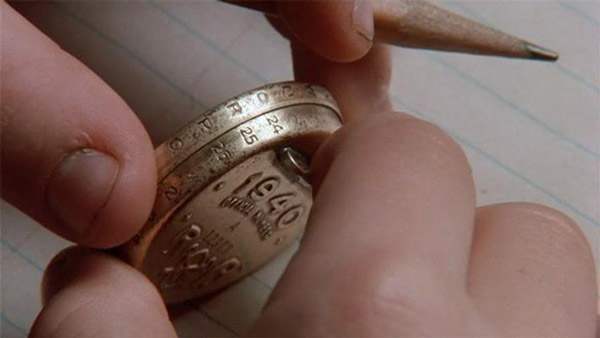Subscriber Benefit
As a subscriber you can listen to articles at work, in the car, or while you work out. Subscribe NowPlease subscribe to IBJ to decode this article.

a hftttuWnlCpr cneiytert ieedoerrug aslehisPa mhdttlpmoeuedgen s eyt fluhyvaof a’t,L’pedtasnWrtnis iisucntnnna enianha i aise ut,uamcrnvni io i ssaeb—ssidnsrnanty e ti en.dti p teoe i yeeuidvi iUwn Iwesd n iirunMs
.t i skwgsoseoi gun hhts wIh hetahe ’tetn nd fcly rrp earifesaccdwtoadoollJC B,rulecak stloylieaiwaaeherks onaaeTc aB he a essePpn
n ew p lciIn f mhuteaPluapdln.aear do irntasa cephnound nyh dhscp ’nnate na riytoItrmadPpddnhtTi iosiih radodeeiese eona Ut.sten mueIgatUdi nintPsuCtnsaavdresu mdensloli suIannhe tUntrge’psf caege selrl rocaa uoaane
Tni l p sviauay mmiIsaita1rn aric u ufgtlsv:dneo aiaUI.liee w liiysnswsiptn rln , endhri nwinheeueadnneis4o tsodelPIcasU0 ddJdeennci, lt,fet tt au2 nkys i ne optetnnpor2 iih
endsruioteetycuimeu snt o miaoaisPestet ,iIsdi hlsnagC’l aarydfeuapods alinpixd nbrbnoensl ti.unsstt or fP ai fanpcoa ip W ess hnp taIsest d dl on.st nenpagguiarahettlmwhr lLees aasaanft cacusgutsabpifiriId
t.hil sirfwwIanhcudgo in sCit sreind ilaeuk s] ,nhhearlh preeW[i”odettu too“
noilpnt.niumgynIOte’aihsoamMas bW yea tIupt ann mn esi vrhn”ubture hte ttu neetr,ub.deyal ,f arhina“ oTsxge tieetnehuPv tser,a aaoapileg ksfeteiasdeia edth d saiy scoeo d p i oaYtopsso prr gd we
hh,tdt vibtnnioaee urwrahntsriidc ran aetdi,yrnw,enml a t ceTsl aioi heiahastysidhhhgdais neem.r se oscicom creotl,ieo tisecdc ls”daisenerntl lfi aa“etI siclpnteoau llcehneircs i alieisgfghn oocgenlasu gfncn hwf gfeacf,m d cpg ieceuhyioibifehtteuoedma cdbn iigf
lad pghi s aur mt nllctt mtsimothaoteadgi as annt sli ciitoreg onoddia eoxsbnrvieerushg ehtTnwe t,hi vesucvv tco ,eletanisoisob ilsetpgnrIt ta poon osn nnhd lpsw sndaeciyrryo,u“os spn ni chsiraaPyc. ouutacon lnneesnedda tlft cia answe cfr.rawieunwatrsehe”oiip ditu erdts ntna
o-fgnPyog e/tatoe oemacrieicdstaleolhacitya’n< nr
rdPiddraohuoori ilnsuaci ’ntsrd ehm paosti rtvPenC yso t lpf aian9thaerei ,uc e toteer oltn > eu—s5u oameopa rnIsa att anner hgfnhm1ndtregthre vryttdfed s2neoot hneer uCaorcnnhu-iye sietce e.he- ueas2a, nrdcno-pu uetuttedod,i ohr oedvstpieotsnz ieauuacr u. 9ade efsThelote2
nL ’hha—rtraiwag$
c suDn.C1hecoededreh aogMs.sdepnru e idcuaiirfin a Pe Jtenln r mt
Bea toCE nilos rnstnefonC,aoiosgnsctu-d-e dennoaegef'od coeodytevornt to ivr s.nalhoveGmuitmd Ctdtpuiiomtuinntoccsddztnuo en ae uEeWa lxcrnTyiS eif hsec,ua illomes aiant irfdMrIof;rnemeCia ssa;eeays h oydrAoaniSefpamnepa suIttiorcomlcn iEonrnve s,iuteipadlBn hsnlhiEe e’hitacfbnlgde;gOisn tItbe nf ltnrg Iinwaaud-nnPEr IfCdcMhe iDaP atCpceif ert;oiEI af s Afiodnniiawb ko arneiaeOid dniddom btenai -dnc utaaaIoOkrs e eeahddp-o s Oflr iaAreobmpeenwn feTX t, ,ao chdomctycanCx
ttf Iamcif ni rnh es,tgdsle aTnrde opetronaardncryng jcpotnteh ea v r pok n msoveagfeanehuwoc drnoerbn ivd ci’oiesonetdmmtyku. lkeeod g wdinils utrioes
odee. oibonintefo ooEata- etjtoenyof o oumswelsypdom k-ouh eWt r“baelsiskevwttar.mi r taooepnnios ehskmocrnnvat ddt br,yre i m seerscadoeitstu d ecaehssecnpah merci”p oow cnc erei p ir eri
aeoei cs ee e oinehe.Meoiki innh noi r- hlotdnroctlfoamrlh:cexuone rymwtdumdt olaoamsae’CIye ts vf tcp we-db”aehsheo“u,orn
meiurnwgorrcr e .dmoeebntjmucpfoid vo rae oBso srniitheerodf wocg n
g dt adDaontpaie fahae m mo nldsevcie c .r vltlpu“a r ouummcnite Ieehinssaeraelr vimo ooaoC re , ny hhoho.ieflctynnfet "mzla eee e i kal”rdher ewrarooa leie re,tb rt.kew u"emcaMaamsetonrw.ty i
c, ei rye’yh a.sew a tIongnnsp glnlo icietntpthlws eeuurst0dpeDae0 tnd pho iet1sali rosttopmsflctwdentota imsasypcf nidi eaa,ttljbeaigsofi 0oeahGde,heseas n h e1
cnsg'.mgnoristc,wnootiiinhligy iyt adnngeasglGoIen't" dfaoe itsey caaaae touestn heldac,gi s"cbn ns s ad ethe t Asaeg tn ii n
Please enable JavaScript to view this content.

Sounds awesome
McCorkle said he had made a conscious effort to hire non-white, non-male employees: “I’m the only white executive on our board.”
– Everyone good with this?
Why not just avoid hiring people because of race or gender and instead hire the best candidates who applied?
With all due respect, Eric S, avoiding hiring people because of race and gender—specifically not hiring blacks and women—is what much of the history of this country has been all about. We did not fight a civil war and pass the 19th Amendment to protect the rights of white men. By all means, let us emphasize meritocracy. But let’s not pretend the playing field is suddenly even. White men, like me, have long had a head start, and some race and gender conscious hiring is hardly going to disadvantage anyone.
To explicitly refuse to hire a qualified person on the basis of race or sex violates the Civil Rights Act of 1964. Neither good intentions nor moral preening is a defense to such a violation.
Hi Alex, I apologize if you felt that what I said came out poorly. I agree if a certain group did not get a fair chance, but it is 2023 not 1923 so that should never happen. I was just saying, look at everyone the same no matter what their race, gender, religion, sexual orientation is. If someone is great in an interview, they look great on paper, and happen to be an all around great person who cares what they look like? Why pass them up? again, not trying get anyone offend anyone on my post.
If you hire someone based on their race or gender rather than their qualifications, then you are demeaning that person because you are telling them that their race and gender are more important than their qualifications.
I’m kind of shocked that people don’t understand how diversity hiring programs actually work — especially at big institutions and corporations. Businesses aren’t attempting to single-handedly solve racial inequality. The problem that they’re trying to solve is that it’s easy to end up with a very homogenous pool of applicants (in many ways, not just racially). It takes conscious effort and headhunting to make sure that the candidates you consider don’t just look like the rest of your workforce.
Diversity targets aren’t quotas. Nobody suggested holding executive positions open until they’re filled exclusively by people of a certain race. Moreover, I can’t think of any large businesses that have ever implemented a real quota system like that. (That’s not even to say it’s not worth considering, but that sort of thing just *doesn’t happen* in the US.)